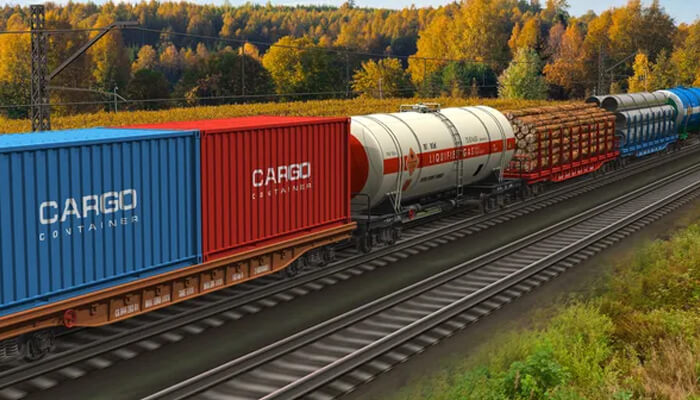Since the beginning of the country, the U.S. has depended on trains and railways to move goods, people, cargo, and livestock. And that dependence isn’t any less today. Granted, there is plenty of shipping taken care of by trucking, boats, and planes, but by and large, the great majority of goods being moved into the country’s mainland and across the states continues to be by rail shipping. And while modernity has increased convenience, and companies like Amazon can move thousands of mini-vans across neighborhoods, railway shipping continues to be the means for the largest movement in 2023.
Intermodal Delivery Today
The most effective method of modern shipping today involves what is known as intermodal logistics. It can be extremely powerful but also confusing to those unfamiliar with whom to use when for shipping. This involves a combination of shipping networks that allows goods, products, and materials to be moved through different shipping modes that are networked together. The connection points happen at shipping hubs, specifically designed to accommodate two more modes of shipping. These points also oftentimes accommodate significant storage capability as well, which allows for more convenient scheduling and connecting of modes running on differing time schedules, which avoids waste and inventory loss due to missed connections.
In the above regard, intermodal rail shipping provides heavy-duty logistics networks across all 48 continental states via the various rail lines already in place nationwide. So, for example, goods that come into Long Beach, CA by boat, can then be rail-shipped to the major intermodal center near southern Joliet, IL, where from there the goods can be distributed further to professional trucking, reaching towns and neighborhoods in the most remote locations. None of that network performance would happen without the availability and interconnectedness of intermodal rail shipping across the U.S. today.
Comparative Efficiency
When one compares the efficiency of rail shipping to boats and planes, there’s not even a question of which one produces more value for the dollars spent. The railways, hands down, are the primary mover across land. Rail shipping can run day and night, moving goods to multiple locations and big and small stops. Planes are limited to major airports and, obviously, boats are limited to where the depth of the water can go, i.e. the extent of a major riverway and that’s all.
When compared with trucking, railways can’t reach every small destination possible by road, but trains are able to move 10 to 20 times the capacity of trucks to specific locations. When partnered together in intermodal centers with trucking, the combination produces a powerful reach across the domestic U.S. and delivery is timely, budget-conscious, and extremely effective for large loads.
A Better Treatment of the Environment
If one wants to compare the impact on the environment between a train and trucking the same distance, combustion engines with diesel are going to be far worse. Trains move bigger loads with less fuel consumption, and there is less energy used per ton-mile traveled by train as well as truck. So, where trucks are used, their distance is limited by intermodal centers where the primary distance is handled by rail, and only the last few miles to regional communities are traveled on highways and local roads. And, no surprise, that helps reduce congestion during business hours on highways as well, allowing traffic to run smoother instead of being clogged by dozens of trucks in the same lanes.
Connecting Domestic Shipping Lanes With the World
The network linkages of railways to the major airports, particularly the international ones and sea ports, provide a ready channel for manufacturing being exported out of the U.S. to international customers. While the U.S. brings in a tremendous amount of consumer goods, it produces and exports capital equipment in demand across the world. That equipment gets to the airports and ports through railways, the one primary means of transport that can take heavy equipment across thousands of miles efficiently and in a far greater capacity than trucks driving the same distances.
While technology continues to make leaps and bounds with regard to what’s possible in the digital world, physical goods and materials still need to be transported physically every day. Railways provide a fundamental link for the U.S. to the rest of the world as well as internally. The railway methods are not that different from 100 years ago, but they could cripple the country if shut down or removed from the logistics picture. Intermodal rail shipping is simply today’s evolution of railway efficiency in shipping. And we can easily expect new connections with coming technologies, both in AI, drones, and whatever else is on the way.




